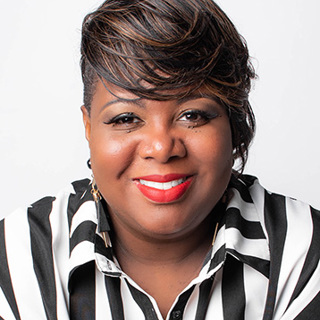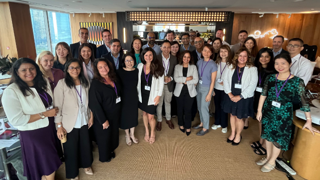Listen in as three Cielo experts share their unique perspectives with HRO Today on how high-performance employer branding, a meaningful DEI strategy, and best-in-class technology can come together to create unparalleled experiences for candidates and talent alike.
Companies must deliver a compelling value proposition across the entire employee lifecycle to earn the attention and trust of talent in today’s job market. Employer branding; diversity, equity and inclusion (DEI); and technology can be key in helping you shine brighter than competitors.
To help TA leaders take action, HRO Today and Cielo experts Jacquese Brown, Senior DEI Program Lead, Elaine Orler, Senior Vice President – Consulting, and Andy Curlewis, Senior Vice President – Product Management, came together to discuss how uniting these areas can create unparalleled experiences for candidates and talent alike.
Here are some key takeaways from the conversation (watch the full webinar below) on how you can start making impactful change to your talent acquisition strategy through employer brand, DEI, and technology:
Employer brand
In an era where reputation, trust and purpose are increasingly important, there’s no shortage of data to help evolve your TA strategy – it’s figuring out what decisions to make from that information that’s challenging. An agile culture is key. Even if you’ve got the right data, you need the right talent to interpret it and the right culture to activate and mobilize it for change. Otherwise, it won’t work.
“In addition to the benefits of a robust employer brand, if you want to go into a new market and sell products to new customers, you need a relevant and energizing employer value proposition that’ll attract and inspire top talent,” said Curlewis. “All of us need to tell a good story to leaders around the importance of what we’re doing in talent but also the complexities – we’re not selling products or services, we’re selling careers. That’s a big sell.”
For the last 10 years, most employer branding focused on candidates, employees and hiring managers. But over the last few years, many companies have also rebranded their HR departments as part of this employer brand transformation. They’re reevaluating the value proposition of HR and talent. Companies understand talent acquisition professionals aren’t just tactical order takers, they don’t just recruit people – they’re strategic business activators.
As you’re reflecting on making changes, consider the business case. Lots of leaders are thinking top-down (what is our strategy, what is the long-term vision) and bottom-up (what are the practical quick wins) in talent acquisition and engagement, but there’s often a gap between TA and engagement. Start with an employer brand and/or talent experience assessment, and definitely think about the budget and the strategy.
Diversity, equity and inclusion
From a diversity perspective, the tenets of inclusion don’t change. You can have a different business focus, internal transition, and new technologies, but if you have an inclusive culture then your culture is what you’ve defined it to be.
You do have to be intentional about how your company monitors its inclusivity. Make sure there’s visibility in what that end-to-end process looks like for applicants or current employees. Is there internal mobility? Are they feeling appreciated? Do they feel there’s an equitable employer relationship? Think about what really fuels your company’s definition of an inclusive workforce.
Remember, every individual and company are at different stages on their diversity journey. It’s natural to want a guiding light, but at every DEI stage, there are different requirements and things that need to be done to help you thrive.
“It’s important to keep a close pulse on where you’re at, what’s been your growth, what’s your growth trajectory, what you aspire to be, and where are the opportunities,” said Brown. “For me, I’m always looking at where are we now, where do we want to be, and how do we create and execute a measurable strategy to get to the end goal.”
Technology
Most companies have foundational technology systems and are constantly looking at enhancing or optimizing those products. One area of opportunity is experimentation. Consider allocating money for product experimentation, so you can fail safely without disrupting the business but see what solutions will add value.
Another opportunity is the data lake – the concept that data is fluid between all your systems. Right now, many companies’ integrations are broken or don’t exist. The duplicate work logic that must happen between system A and system B could be solved quickly by a data management model, by a fluidity of what can happen from an integration.
“Integrations are easier today than they’ve ever been,” said Orler. “They’re still one of the final frontiers for how our systems will connect, but they’re such a great opportunity for us to evolve the conversation around the brand, content, and data and analytics necessary from a DEI perspective tied to the workflow logic that we have going on in talent acquisition. It can all be done through data models.”
To identify any gaps, inventory your existing tools and platforms – not just the list of what they are but the performance and value that they bring. Once you know your current state, then you can begin planning how to solve them.
Key takeaway
Alone employer brand, DEI and technology can elevate your talent acquisition strategy. But it’s when they come together that the magic really happens. While change doesn’t happen overnight, working with an external TA partner can guide you throughout the journey and ensure your company gets the best results.
About the experts

Senior Vice President – Product Management, Cielo
LinkedIn connectFormer Senior Vice President – Technology Consulting, Cielo
LinkedIn connect
Senior DEI Program Lead, Cielo
LinkedIn connect





